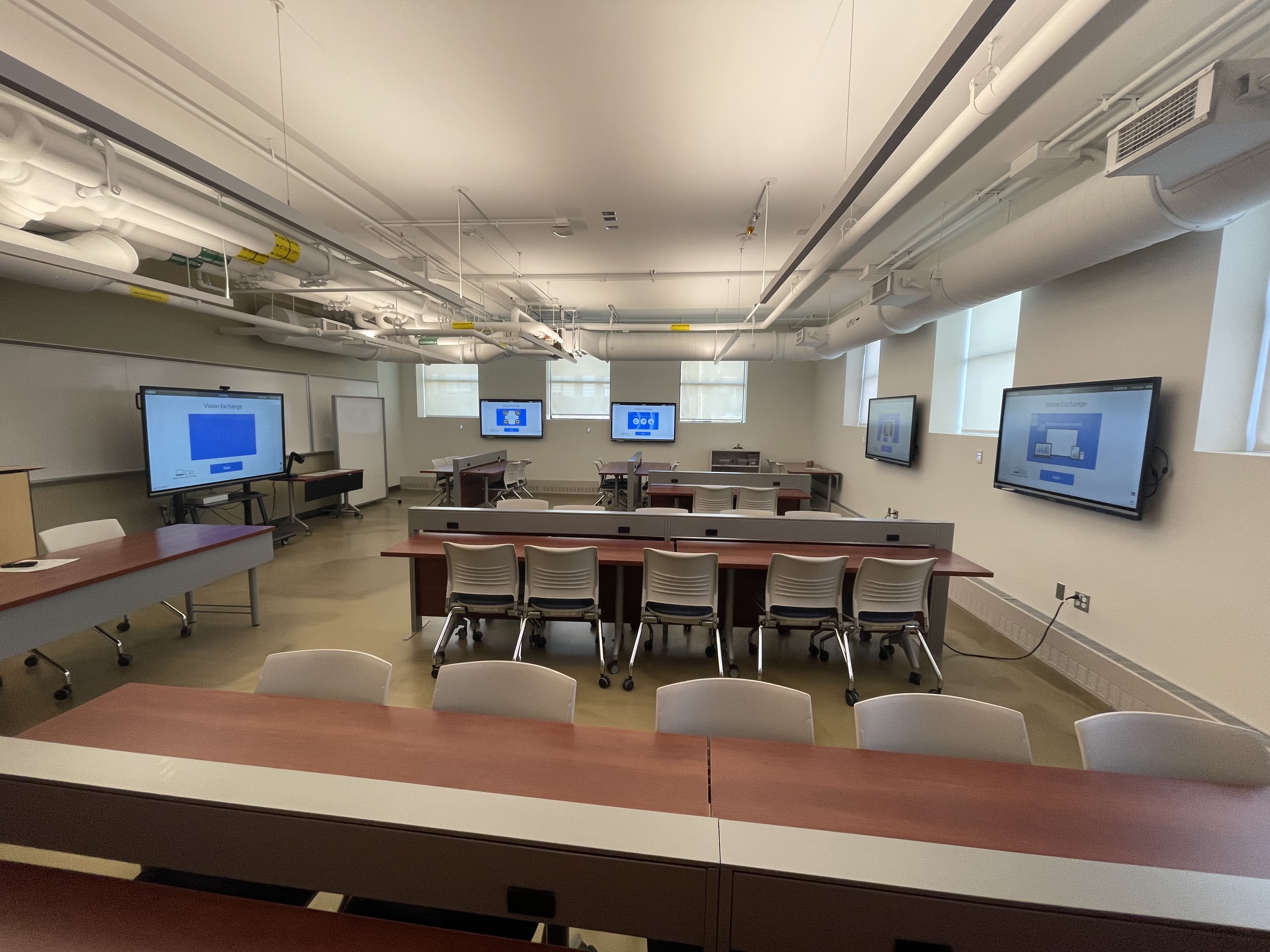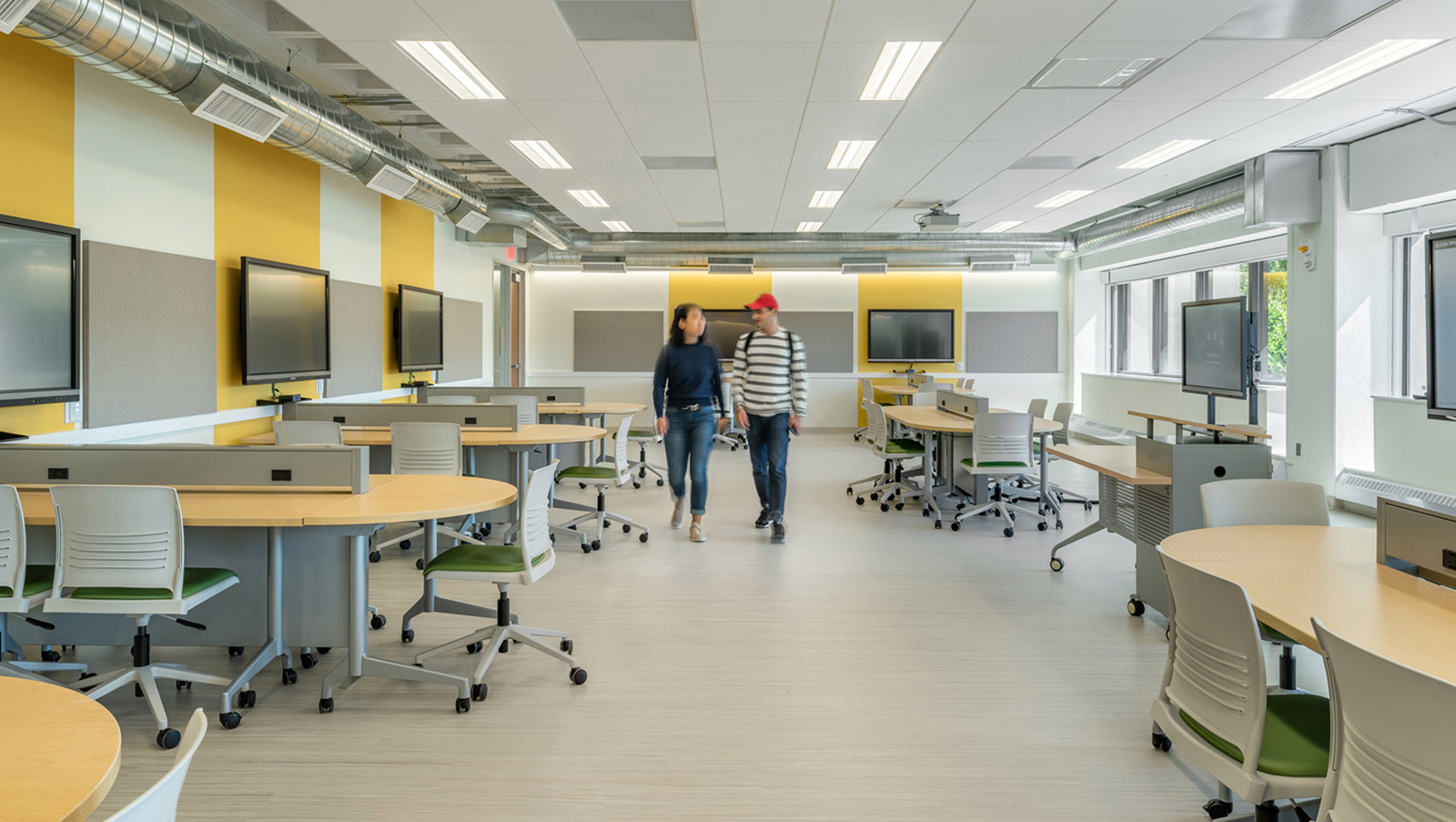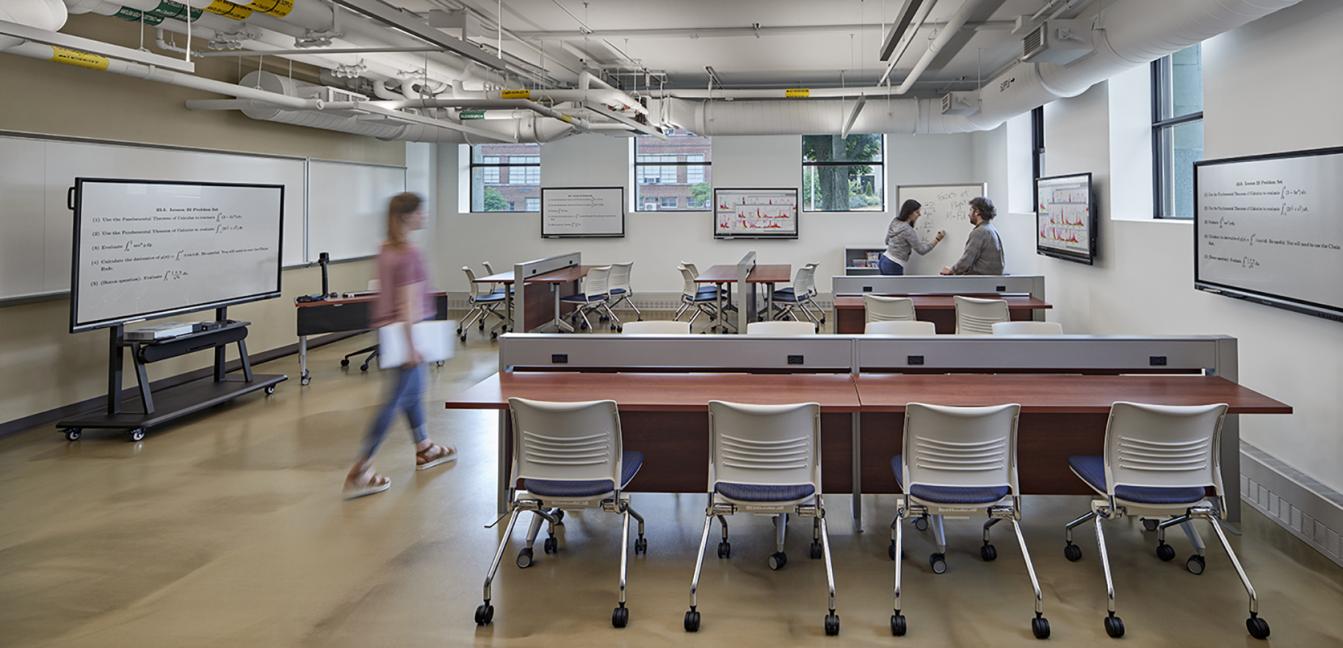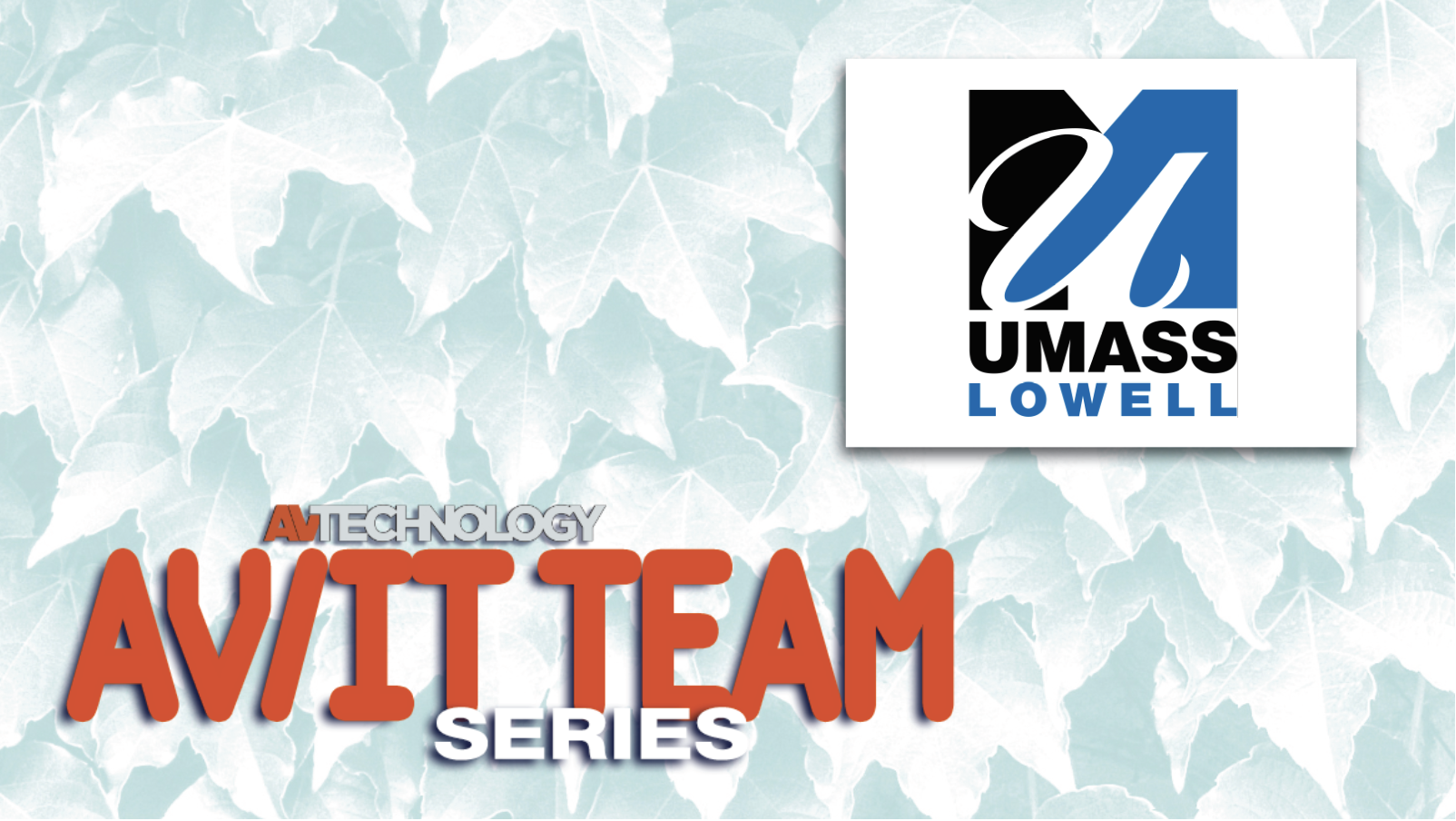GOALS
University of Massachusetts Lowell: Our goal was to create reliable TEAL (Technology Enhanced Active Learning) spaces on campus to promote collaboration between students in a dynamic classroom environment.

CHALLENGES
All the spaces were new building projects, which helped to create a unique room configuration layout and premise wiring. We wanted the classrooms to be software centric and to not have an abundance of hardware and wired infrastructure for switching and distribution. The biggest hurdle was identifying the correct solution—one that relied on wireless connectivity for students; was device agnostic; and provided on-screen, intuitive controls for the instructor. Two solutions were identified and implemented. In the Olsen Sciences building, Sony Vision Exchange was the selected solution, as it provided a better solution for whiteboard sharing and snapshots.
In Coburn Hall, primarily social sciences and education, the WolfVision vSolution platform was installed. This allowed for easier iPad and Chromebook integrations. In both spaces, students leverage the university’s wireless infrastructure to connect to the student “pods.” Each pod is connected to a large-format interactive-touch flatscreen. The student pods are clustered around the perimeter of the room and accommodate six students each. The Instructional Technology Services team worked closely with the IT Networking team to open the appropriate ports and configure firewalls for seamless connectivity. One hurdle was to overcome the multicast restrictions of the network. Both the Instructional Technology and Networking teams were able to get creative and provide a workable solution to get these classrooms configured. This turned out to be a very good example of cross collaboration within IT.

USER BENEFITS
These spaces are not your typical classrooms. We strongly suggested training and curriculum modifications for the faculty who teach in these rooms. We offered formal training to groups of folks who were interested in teaching in the spaces. During these training sessions, we not only covered technology features of the rooms, but what type of group learning activities are ideally suited for this type of technology. These rooms were already installed for about a year before the COVID-19 pandemic put a crimp on in-class course delivery.
Over the past semester, we have returned to a more normal environment, and activity in these spaces is now at pre-pandemic levels. Faculty need to request being scheduled in these spaces prior to the semester with the registrar’s office. We have streamlined this process with a web request form. Once faculty have used the room for a semester, they are eager to get scheduled in the spaces again. Demand is to a point where we are planning to double the number of TEAL spaces on campus in the next couple of years. The reliability of the equipment, dynamic course delivery options, and ease of use have made these spaces a huge success. Students have no problem connecting to the pods and sharing content because of the easy-to-use and intuitive connection process.

THE AV/IT TEAM
This integration was a true team effort, from installing technology, coordinating installation, engaging the Networking team, evaluating and testing platforms, and training end users—both students and faculty. The team included:
Robert Coppenrath, senior instructional technologist; David Corcoran, instructional technologist; Bill Suppa, manager, instructional technology services; Jon Kleiner, instructional technologist; David Hadley, senior classroom technician; Andy Alfano, principal classroom technician; Tom Robbins, classroom technician; Matt Gordon, senior instructional technologist; Michael Lucas, senior director of instructional technology
COMPLETED: January 2020
TECH SNAPSHOT
- Echo360 video platform
- Sony Vision Exchange
- Viewsonic multi-touch 65-inch and 85-inch interactive flatscreens
- WolfVision vSolution

